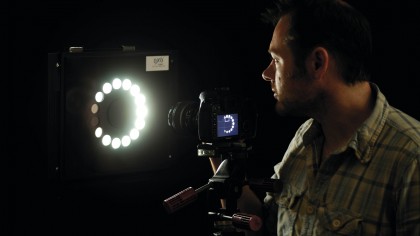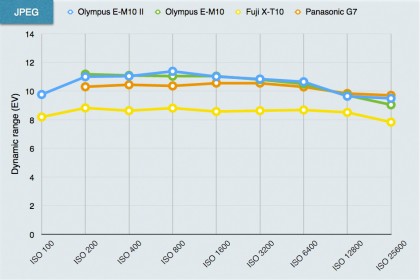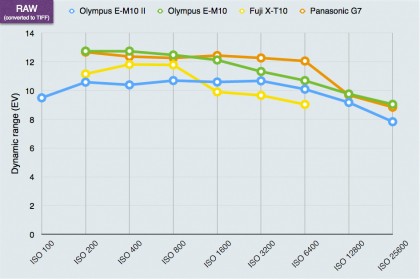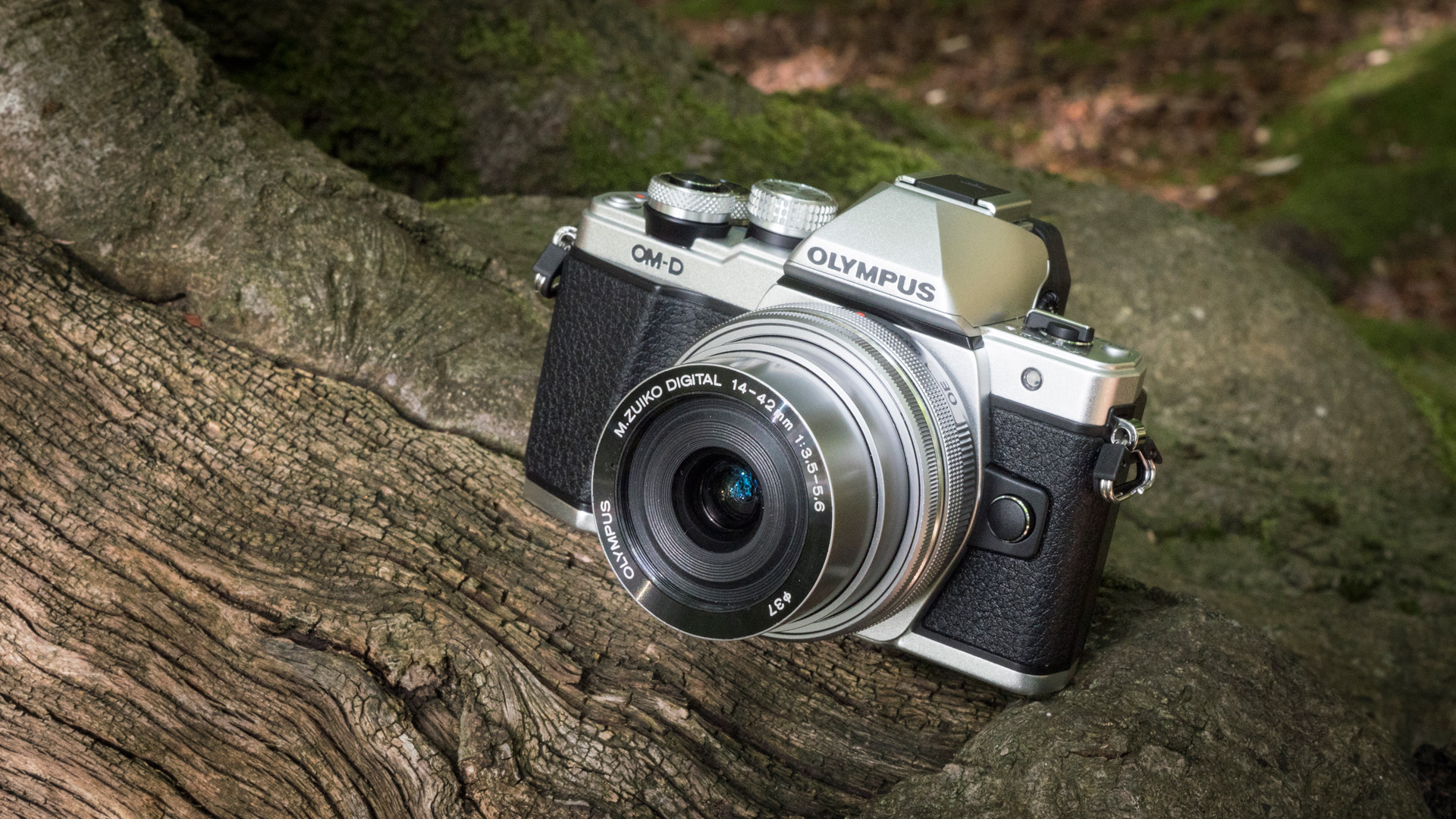Why you can trust TechRadar
Dynamic range is a measure of the range of tones the sensor can capture. Cameras with low dynamic range will often show 'blown' highlights or blocked-in shadows. This test is carried out in controlled conditions using DxO hardware and analysis tools.

Read: Noise and dynamic range results explained
Dynamic range is measured in exposure values (EV). The higher the number the wider the range of brightness levels the camera can capture. This falls off with increasing ISO settings because the camera is having to amplify a weaker signal. Raw files capture a higher dynamic range because the image data is unprocessed.
Olympus OM-D E-M10 II dynamic range charts

JPEG dynamic range analysis: As we found in real world shooting, the E-M10's JPEGs have good dynamic range which means that highlights don't burn out quickly and shadows have detail.

Raw (converted to TIFF) dynamic range analysis: Unusually after conversion to TIFF using the supplied software the E-M10's raw files have a lower dynamic range than simultaneously captured JPEGs. However, performing a bespoke conversion is likely to draw more information out of the file and produce a better result than these figures might indicate.
Sign up for breaking news, reviews, opinion, top tech deals, and more.
Current page: Lab tests: Dynamic range
Prev Page Lab tests: Resolution Next Page Lab tests: Signal to noise ratio